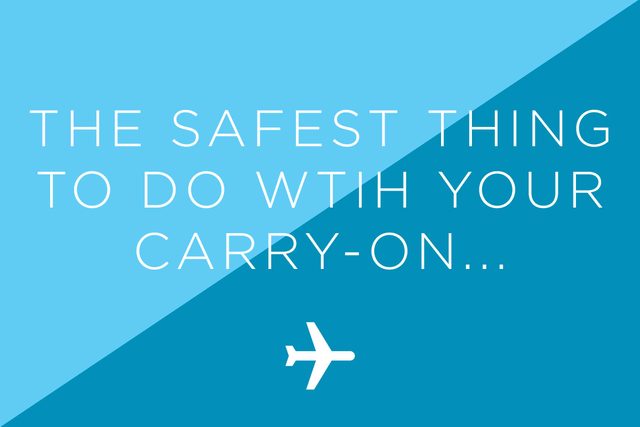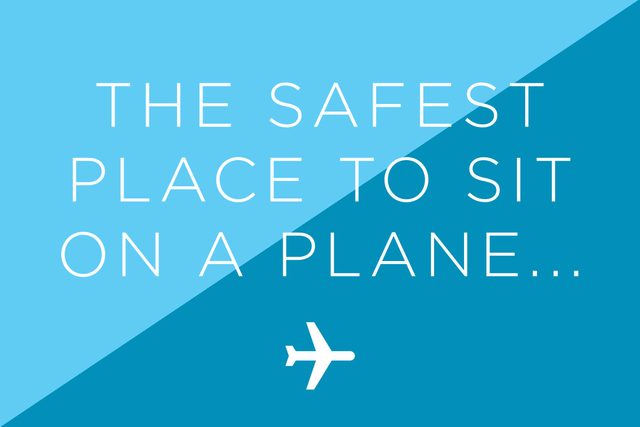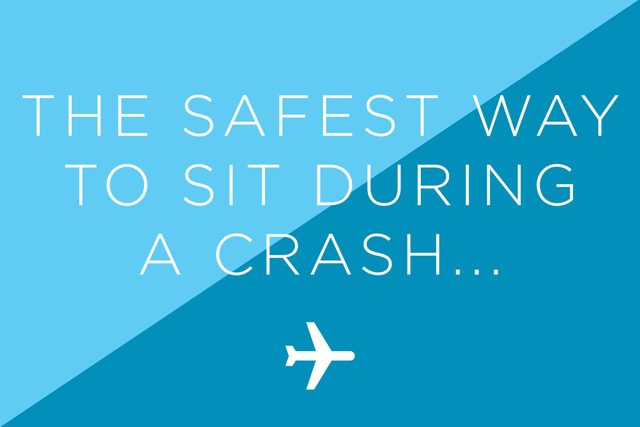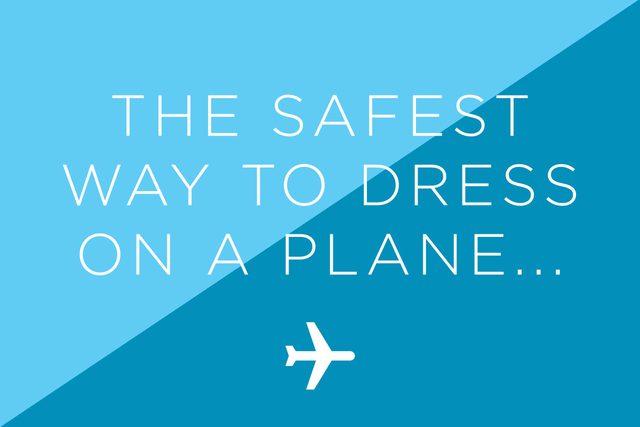
Your carry-on bag
…Is leave it on the plane. Flight crews ask you to keep your luggage clear of the aisles for a reason; in the event of an evacuation, you don’t want it blocking an escape route. With as little as 90 seconds to evacuate a burning place, the precious time spent reaching for luggage could be a life and death decision for someone. Learn about the 22 things flight attendants won’t tell you.

Your seat
…Is behind the wings. A Popular Mechanics study of 20 commercial jet crashes with both fatalities and survivors found that passengers seated in the rear cabin (behind the wings) had a 69 percent chance of survival, compared with just 49 percent for those in first class. But you don’t have to sacrifice leg room for safety’s sake: exit rows are perhaps the safest place to sit on the whole plane. In the event of an evacuation, the closer you are to an exit, the higher the chance you’ll escape unscathed. Here’s how to pick the best seat on a plane for every need.

How to sit
…Is to brace yourself (literally). In a 2015 crash simulation, Boeing found that passengers who both wore their seat belts and assumed a brace position (feet flat, head cradled against their knees or the seat in front of them if possible) were likeliest to survive a crash. Seat-belted fliers who did not brace suffered serious head injuries, and those with no seat belts or bracing died on impact. Learn about these plane crash survivors in Alaska.

During a crash
… Is put on the oxygen mask the minute it drops. During a loss of cabin pressure, the fall in oxygen can knock you unconscious in as little as 20 seconds. Listen to your flight attendants: Always secure your oxygen mask before helping others. You can’t help if you can’t breathe. Find out about the little-known airplane feature that could save your life.

What to wear
…Is un-flammably. The National Transportation Safety Board tells us that 68 percent of plane crash fatalities occur in post-crash fires, not in the initial impact. Fortunately, here’s a scenario you can plan for days in advance while you pack your suitcase: On the day you’re flying, avoid wearing flammable synthetic fibers like polyester and nylon. Instead, opt for natural materials like cotton or wool (good news if you’re a sweatpants-at-the-airport kind of person). It’s also a good idea to favor long pants (like jeans) and a long-sleeved shirt for extra protection from flames and sharp objects. Don’t miss these other 16 mistakes you need to stop making before your next flight.

What to wear on your feet
…Never leave your feet. Hassle-free flip-flops might seem like a good idea for braving airport security, but in the chaos of a crash or evacuation, they’ll only slow you down. Likewise, high heels can lead to stumbling, and may even be sharp enough to pop the inflatable exit slide. Wear a pair of comfy flats or sneakers, and keep them on your feet through the whole flight. Not only can loose shoes get in other passengers’ way and hinder your own mobility during an evacuation, but also remember that nobody wants to smell your stinky feet. And statistically, that is a far greater threat to air travel than any crash. Learn 18 more things you should never do on an airplane.